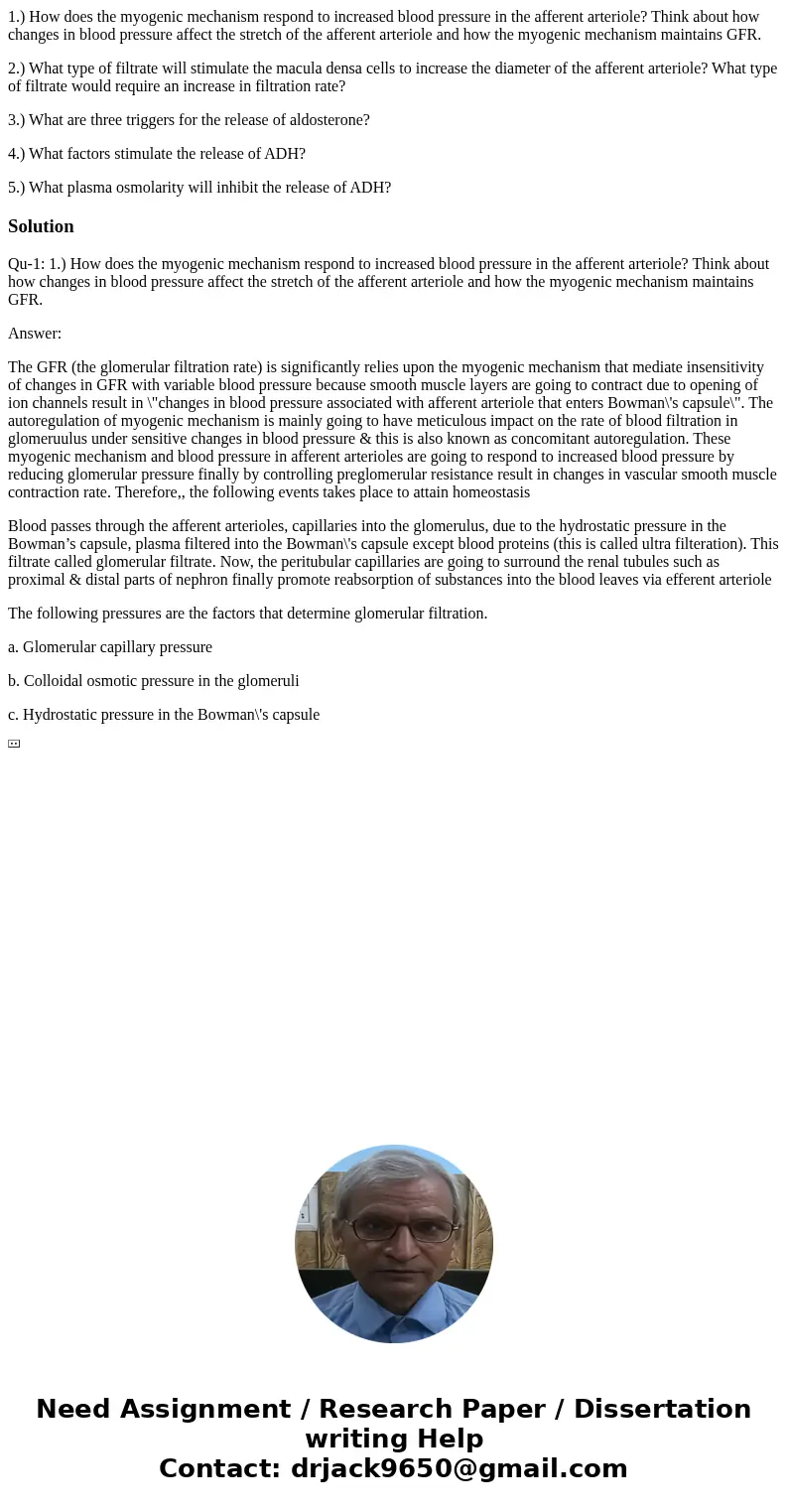1 How does the myogenic mechanism respond to increased blood
1.) How does the myogenic mechanism respond to increased blood pressure in the afferent arteriole? Think about how changes in blood pressure affect the stretch of the afferent arteriole and how the myogenic mechanism maintains GFR.
2.) What type of filtrate will stimulate the macula densa cells to increase the diameter of the afferent arteriole? What type of filtrate would require an increase in filtration rate?
3.) What are three triggers for the release of aldosterone?
4.) What factors stimulate the release of ADH?
5.) What plasma osmolarity will inhibit the release of ADH?
Solution
Qu-1: 1.) How does the myogenic mechanism respond to increased blood pressure in the afferent arteriole? Think about how changes in blood pressure affect the stretch of the afferent arteriole and how the myogenic mechanism maintains GFR.
Answer:
The GFR (the glomerular filtration rate) is significantly relies upon the myogenic mechanism that mediate insensitivity of changes in GFR with variable blood pressure because smooth muscle layers are going to contract due to opening of ion channels result in \"changes in blood pressure associated with afferent arteriole that enters Bowman\'s capsule\". The autoregulation of myogenic mechanism is mainly going to have meticulous impact on the rate of blood filtration in glomeruulus under sensitive changes in blood pressure & this is also known as concomitant autoregulation. These myogenic mechanism and blood pressure in afferent arterioles are going to respond to increased blood pressure by reducing glomerular pressure finally by controlling preglomerular resistance result in changes in vascular smooth muscle contraction rate. Therefore,, the following events takes place to attain homeostasis
Blood passes through the afferent arterioles, capillaries into the glomerulus, due to the hydrostatic pressure in the Bowman’s capsule, plasma filtered into the Bowman\'s capsule except blood proteins (this is called ultra filteration). This filtrate called glomerular filtrate. Now, the peritubular capillaries are going to surround the renal tubules such as proximal & distal parts of nephron finally promote reabsorption of substances into the blood leaves via efferent arteriole
The following pressures are the factors that determine glomerular filtration.
a. Glomerular capillary pressure
b. Colloidal osmotic pressure in the glomeruli
c. Hydrostatic pressure in the Bowman\'s capsule

 Homework Sourse
Homework Sourse